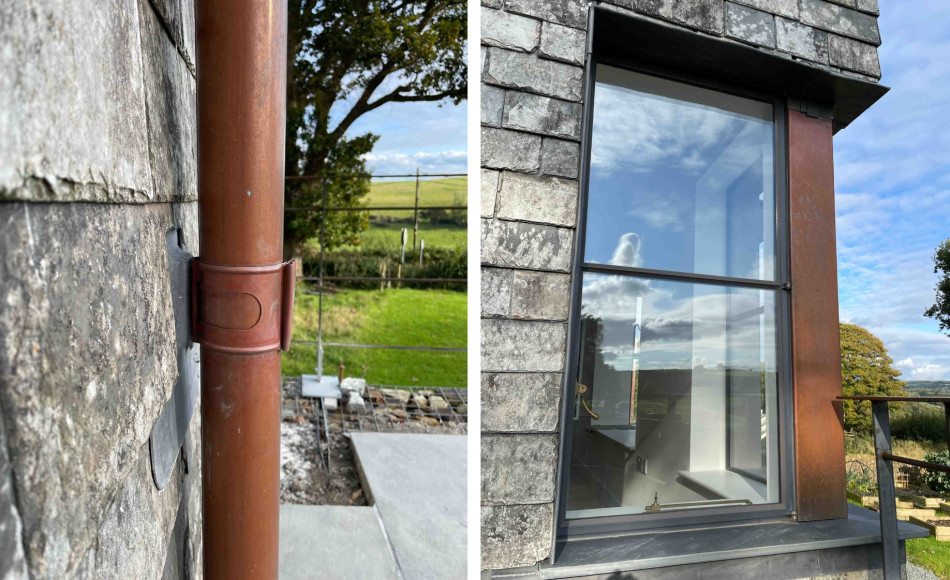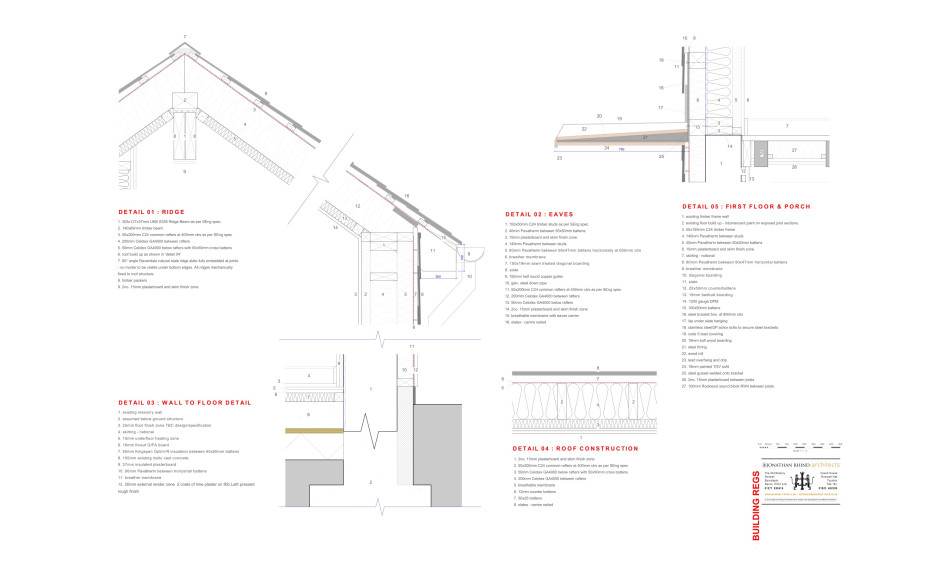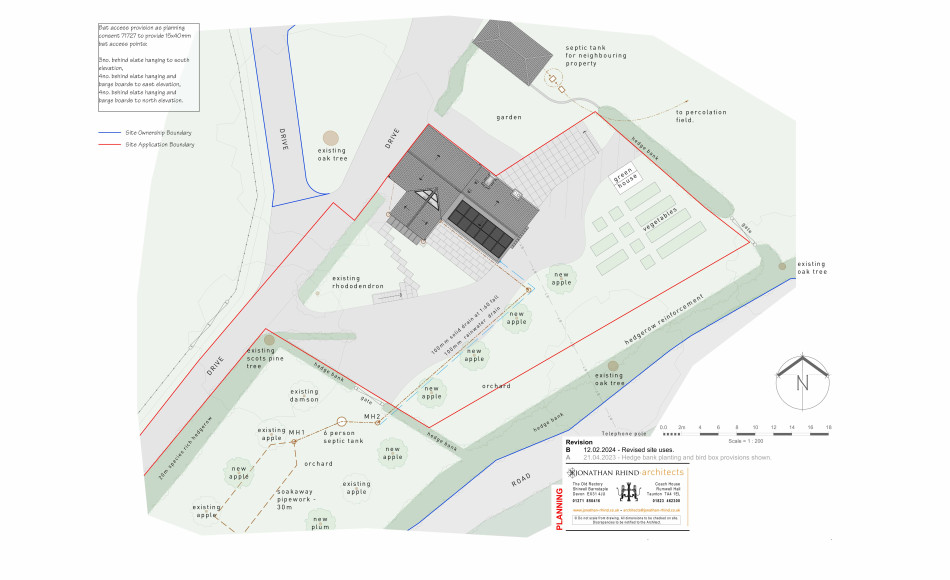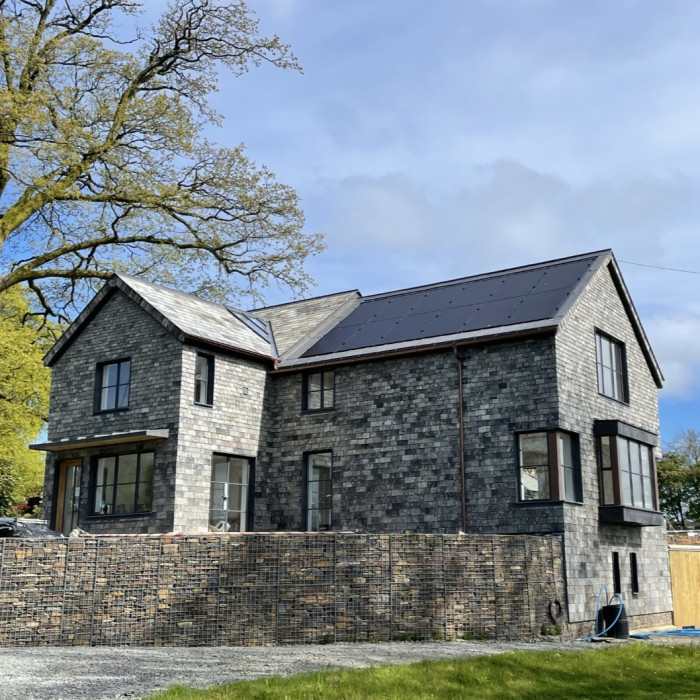Sustainable and energy efficient design
— 15 Oct 2024





A recently converted and extended property in north Devon has been designed with sustainability, energy efficiency and low maintenance at the forefront of the design brief.
Originally a rural office, the use changed to a dwelling re-using substantial amounts of the original structure and services, thereby utilising much of the embodied energy and materials within the building.
The house is also designed to be low maintenance, including measures such as:
- Slate roofs, slate barges, external leadwork
- Slate covered walls, and lead window and door reveals
- Metal windows and roof lights
- Copper gutters and downpipes - with no decorations
The new dwelling significantly exceeds current and 2025 proposed Building Regulations insulation standards, with the following sustainability measures incorporated:
- Reuse of original office solid masonry walls, basement and first floor structure
- 5.5kw PV roof panels generate significant proportions of the electrical and heating demand
- 10kw battery storage to retain generated power and run domestic loads and heating and hot water requirements in all but the coldest days of winter
- External insulation (approximately 30% higher than 2025 Building Regulations standards) to reduce energy demand
- Mechanical ventilation heat recovery system (MVHR) to recover 75 - 90% of waste heat from ventilation
- Air Source Heat Pump (ASHP) to provide low carbon heating source
- 7kw woodburner to augment the ASHP in cold weather and utilise sustainable timber sources from surrounding hedgebanks and trees
The solar panels are a key part of the sustainability measures. They are designed into the roof, in effect performing as large glass roof tiles. This means there are no wasted building materials, by installing a roof and then installing solar panels on top.
The system is designed to provide enough electricity to run the entire 196m2 house for several months of the year with little or no demand on the mains grid. The supply will first go to the power consumption of the house including running the ASHP; then it will go to batteries; when these are full any excess will feed into immersion heaters in the hot water storage system, and finally redirected to the grid.
The predicted energy assessment for the property – which rates the energy use per square metre of floor area and is based on fuel costs and carbon dioxide emissions – is an energy efficiency rating of 94 and environmental impact (CO2) rating of 99, putting it firmly into the top EPC category A.
It will be interesting to review the outcomes of the energy usage of the property when it has been in use.